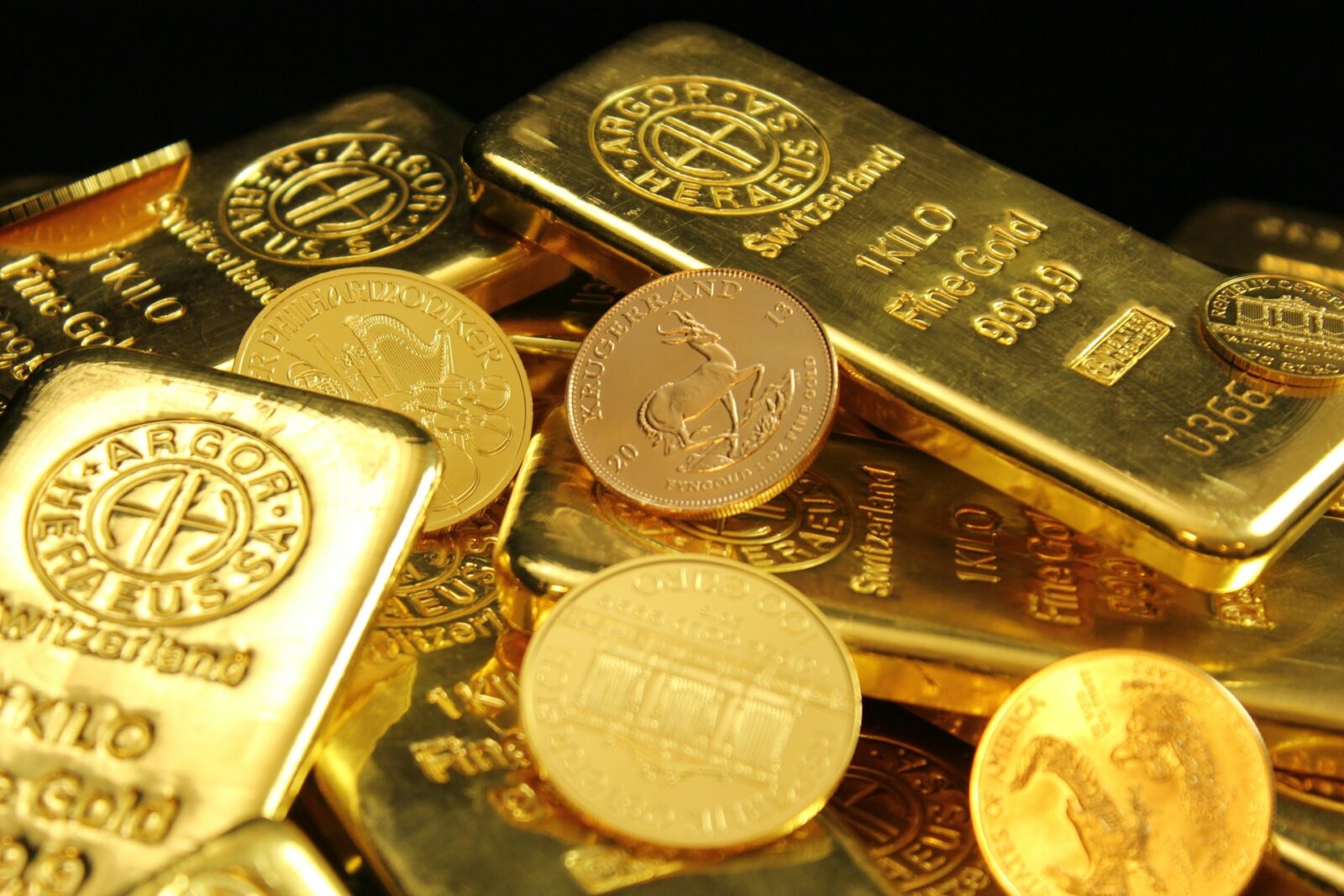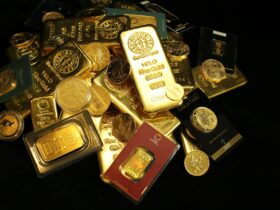A Calm After the Surge
After months of record-breaking rallies and sharp reversals, gold prices steadied near $4,000 per ounce this week as investors digested new policy developments from Beijing.
China — the world’s largest consumer and importer of gold — announced the end of a long-standing value-added tax (VAT) rebate for certain retailers, a move that analysts say could temper domestic demand and trigger short-term volatility in global markets.
While the decision caused an initial wave of selling and sent shares of major Chinese jewelry companies tumbling, the broader bullion market appeared to find its footing by midweek. Spot gold edged up 0.1% after an early dip of nearly 1%, signaling that the global gold bull run may simply be entering a phase of consolidation rather than reversal.
“This policy adjustment is less about discouraging gold and more about stabilizing the overheated retail frenzy,” said Adrian Ash, Director of Research at BullionVault. “Chinese demand has not been the key driver of gold’s historic rise this year — but this could mark a tactical pause for both traders and consumers.”
As of late Thursday in Singapore, spot gold traded at $4,004.73 per ounce, while platinum and silver saw moderate gains.
China’s Policy Shift: What Changed and Why It Matters
Beijing’s weekend announcement marked the end of an important tax incentive that had long benefited retailers in the domestic gold jewelry industry.
1. The Policy in Detail
Previously, non-member retailers could offset up to 13% of the VAT paid when selling gold purchased from the Shanghai Gold Exchange (SGE) or the Shanghai Futures Exchange (SFE).
Under the new regulation, only exchange members — and only those selling investment-grade gold products — will retain the full deduction. Others, including jewelry manufacturers and industrial users, will now be limited to a 6% deduction, cutting their tax benefit by more than half.
This new structure will remain in place through the end of 2027, effectively reshaping how Chinese gold retailers price, source, and distribute their products.
2. The Market Impact
The immediate reaction was swift. Shares of major jewelry houses plunged:
- Chow Tai Fook Jewellery Group Ltd. fell as much as 12% in Hong Kong.
- Chow Sang Sang Holdings International Ltd. dropped 8%.
- Laopu Gold Co. tumbled 9%.
Analysts at Citigroup Inc., including Tiffany Feng, warned that the changes would raise production and retail costs across the industry:
“The entire sector is likely to raise prices to pass on cost pressures to consumers,” the note said, “which could temporarily dampen gold jewelry demand, especially among mass-market buyers.”
Why China’s Gold Policy Matters Globally
China isn’t just another player in the gold market — it’s the heartbeat of global demand.
According to the World Gold Council (WGC), China accounted for roughly 28% of global gold jewelry consumption in 2024, importing more than 1,000 metric tons of gold annually. Its central bank has also been a consistent buyer, adding to its reserves for over 17 consecutive months as part of a broader “de-dollarization” strategy.
That means even marginal changes in Chinese demand ripple through global pricing structures.
However, despite the headline shock, analysts argue that this tax adjustment is more about curbing speculative buying and stabilizing the domestic gold trade than signaling any policy-driven slowdown in gold accumulation.
“China is managing the froth,” said Hiroshi Takada, Senior Commodities Strategist at Mizuho Bank. “Retail buying has been extraordinary this year — almost unsustainably so — and this move prevents overheating without undermining the long-term bullish fundamentals for gold.”
Global Context: Gold’s Remarkable Rally in 2025
Even after the recent pullback, gold remains up over 50% year-to-date, cementing one of its strongest annual performances in decades.
The metal’s rally has been fueled by multiple macroeconomic and geopolitical factors:
- Central Bank Demand:
More than a dozen central banks — including those of China, India, Turkey, and Poland — have accelerated gold purchases as a hedge against currency volatility and growing U.S. fiscal risks. - The Debasement Trade:
Investors have been flocking to hard assets amid concerns that fiscal deficits and persistent inflation are eroding fiat purchasing power. Gold and other real-world assets have benefited from the so-called “debasement trade.” - Geopolitical Uncertainty:
Escalating tensions in Eastern Europe, the Middle East, and the South China Sea have kept gold attractive as a safe-haven asset. - AI and the New Economy:
As speculative capital floods into AI-related equities and digital assets, gold has found renewed interest as a counterbalance in diversified portfolios.
This combination of monetary, geopolitical, and structural forces has created what some analysts call “the perfect gold storm.”
“Gold’s surge to $4,381 an ounce in October wasn’t just a spike — it was a signal,” said Caroline Bain, Chief Commodities Economist at Capital Economics. “The world is preparing for an era where hard assets regain primacy.”
A Shift in Sentiment, Not in Fundamentals
While China’s new tax framework has injected short-term caution into the market, most analysts view it as a localized adjustment, not a reversal of the global uptrend.
The retail buying frenzy that helped push gold to record highs in late 2024 and early 2025 had begun to show signs of fatigue even before the policy change. Prices were already consolidating after overbought indicators flashed across technical charts.
Now, with some speculative pressure easing, institutional investors see the potential for a healthier, more sustainable bull market.
“The correction could actually strengthen the long-term case for gold,” said Adrian Ash of BullionVault. “Traders looking for a deeper pullback may finally get their entry point, while the structural drivers — central banks, inflation, and fiscal uncertainty — remain firmly in place.”
The Emerging Role of Tokenized Gold
An interesting side effect of China’s tax change is the growing attention toward tokenized gold — blockchain-backed digital assets that represent physical gold stored in secure vaults.
In markets like Singapore, Dubai, and London, tokenized gold platforms have seen surging activity as investors look for alternative ways to gain exposure without relying on physical jewelry or coins.
Stablecoin issuer Tether’s XAUT and PAX Gold (PAXG) have both seen significant inflows, offering 24/7 trading, transparency, and liquidity — features that appeal to tech-savvy investors navigating tighter regulations in physical markets.
Some analysts suggest that China’s regulatory tightening could even accelerate interest in digital bullion products, particularly among younger investors who prefer mobile-based investments.
Technical Outlook: Gold’s Support and Resistance Levels
From a technical standpoint, gold remains in a strong uptrend despite near-term consolidation:
- Immediate Support: $3,940 – $3,980
- Key Resistance: $4,150 – $4,250
- Long-Term Target: $4,500+ if global central bank demand persists
Momentum indicators such as the Relative Strength Index (RSI) suggest gold has moved out of overbought territory, leaving room for another leg upward should macro conditions remain favorable.
Traders are watching upcoming U.S. inflation data and Federal Reserve policy statements for fresh cues on rate expectations, which remain one of the most significant short-term catalysts for gold.
A Breather, Not a Breakdown
China’s decision to end certain tax incentives for gold retailers may have rattled jewelry stocks and triggered temporary weakness, but the move doesn’t fundamentally alter gold’s global outlook.
The precious metal continues to be supported by robust central bank purchases, persistent inflation risks, and investor appetite for hard assets in an uncertain macroeconomic environment.
What’s unfolding instead is a healthy recalibration — one that filters out speculative excess while paving the way for longer-term, institutional-driven growth.
“Gold’s story is far from over,” said Bain. “If anything, it’s entering a more mature phase — less about mania, more about monetary reality.”
With prices stabilizing near the symbolic $4,000 mark, the world’s oldest store of value is proving once again that it can adapt — even when policies shift and markets evolve.






